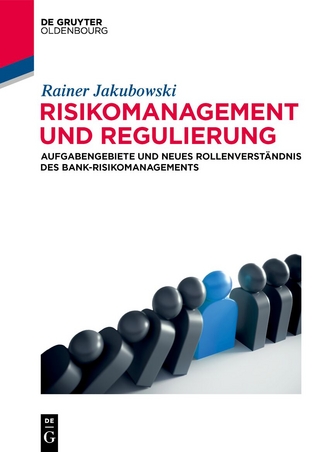
CMT Level I 2017
John Wiley & Sons Inc (Verlag)
978-1-119-36167-1 (ISBN)
- Titel ist leider vergriffen;
keine Neuauflage - Artikel merken
CMT Level I 2017: An Introduction to Technical Analysis fully prepares you to demonstrate the basic competencies of an entry–level analyst, including a working knowledge of terminology and the ability to discuss key concepts and fundamental analytical tools.
Everything you need to pass Level I of the CMT Program
CMT Level I 2017: An Introduction to Technical Analysis fully prepares you to demonstrate the basic competencies of an entry–level analyst, including a working knowledge of terminology and the ability to discuss key concepts and fundamental analytical tools. Covered topics address theory and history, markets, market indicators, construction, confirmation, cycles, selection and decision, system testing, and statistical analysis. The Level I exam emphasizes trend, chart, and pattern analysis.
This cornerstone guidebook of the Chartered Market Technician® Program will provide every advantage to passing Level I.
For over 40 years the Market Technicians Association has worked to advance the discipline of technical analysis. What started as a small group of sell–side analysts on Wall Street is now a global association of over 4,500 members in 85 countries. The mission of the Market Technicians Association is to establish and maintain the highest professional standards among technical analysts by educating the investment community about the theory, practice, and application of technical analysis.
About the Market Technicians Association ix
What Is the CMT® Program? xi
How This Book Was Created xiii
Preface xv
Chapter 1 The Basic Principle of T echnical Analysis—The Trend 1
Charles D. Kirkpatrick II and Julie R. Dahlquist
Chapter 2 Dow Theory 13
Charles D. Kirkpatrick II and Julie R. Dahlquist
Chapter 3 History and Construction of Charts 25
Charles D. Kirkpatrick II and Julie R. Dahlquist
Chapter 4 Trends—The Basics 43
Charles D. Kirkpatrick II and Julie R. Dahlquist
Chapter 5 Breakouts, Stops, and Retracements 73
Charles D. Kirkpatrick II and Julie R. Dahlquist
Chapter 6 Moving Averages 95
Charles D. Kirkpatrick II and Julie R. Dahlquist
Chapter 7 Bar Chart Patterns 123
Charles D. Kirkpatrick II and Julie R. Dahlquist
Chapter 8 Short–Term Patterns 157
Charles D. Kirkpatrick II and Julie R. Dahlquist
Chapter 9 Confirmation 199
Charles D. Kirkpatrick II and Julie R. Dahlquist
Chapter 10 Point and Figure Charting 241
Perry J. Kaufman
Chapter 11 Introduction to the Wave Principle 267
Wayne Gorman, Jeffrey Kennedy, and Robert R. Prechter, Jr.
Chapter 12 The Anatomy of E lliott Wave Trading 285
Wayne Gorman, Jeffrey Kennedy, and Robert R. Prechter, Jr.
Chapter 13 Overview 301
David Wilson
Chapter 14 Government 311
David Wilson
Chapter 15 Companies 335
David Wilson
Chapter 16 Hard Assets 361
David Wilson
Chapter 17 Indexes 377
David Wilson
Chapter 18 Option Pricing Basics 385
Edwin J. Elton, Martin J. Gruber, Stephen J. Brown, and William N. Goetzmann
Chapter 19 Understanding Implied Volatility 395
Russell Rhoads
Chapter 20 About the VIX Index 407
Russell Rhoads
Chapter 21 Consensus and Commitment Indicators 421
Dr. Alexander Elder
Chapter 22 Measuring Market Strength 429
Charles D. Kirkpatrick II and Julie R. Dahlquist
Chapter 23 Seasonality and Calendar Patterns 463
Perry J. Kaufman
Chapter 24 What Is the Efficient Market Hypothesis? 475
Edwin T. Burton and Sunit N. Shah
Chapter 25 The EMH and the “Market Model” 483
Edwin T. Burton and Sunit N. Shah
Chapter 26 The Forerunners to Behavioral Finance 491
Edwin T. Burton and Sunit N. Shah
Chapter 27 Noise Traders and the Law of One Price 497
Edwin T. Burton and Sunit N. Shah
Chapter 28 Noise Traders as Technical Traders 505
Edwin T. Burton and Sunit N. Shah
Chapter 29 Academic Approaches to Technical Analysis 515
Andrew W. Lo and Jasmina Hasanhodzic
Chapter 30 Basic Concepts and Calculations 529
Perry J. Kaufman
Chapter 31 Objective Rules and Their Evaluation 543
David Aronson
Chapter 32 Being Right or Making Money 559
Ned Davis
Chapter 33 The Model–Building Process 589
Ned Davis
Chapter 34 Relative Strength as a Criterion for Investment Selection 605
Robert A. Levy
| Erscheinungsdatum | 11.02.2017 |
|---|---|
| Verlagsort | New York |
| Sprache | englisch |
| Maße | 181 x 235 mm |
| Gewicht | 1120 g |
| Themenwelt | Wirtschaft ► Betriebswirtschaft / Management ► Finanzierung |
| Betriebswirtschaft / Management ► Spezielle Betriebswirtschaftslehre ► Bankbetriebslehre | |
| ISBN-10 | 1-119-36167-2 / 1119361672 |
| ISBN-13 | 978-1-119-36167-1 / 9781119361671 |
| Zustand | Neuware |
| Haben Sie eine Frage zum Produkt? |
aus dem Bereich


